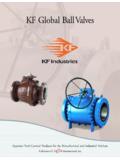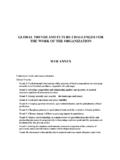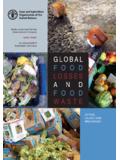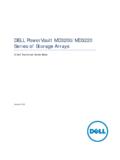Transcription of Global Age-friendly Cities: A Guide
1 Global Age-friendly cities : A Guide For further information, please contact: ISBN 978 92 4 154730 7. Ageing and Life Course Family and Community health world health organization Avenue Appia 20. CH-1211 Geneva 27. Switzerland E-mail: Fax: + 41 (0) 22 791 4839. AGEING AND LIFE COURSE, FAMILY AND COMMUNITY health . Global Age-friendly cities : A Guide WHO Library Cataloguing-in-Publication Data Global Age-friendly cities : a Guide . - statistics. health . planning. characteristics. of life. participation. planning. health organization . ISBN 978 92 4 154730 7 (NLM classi cation: WT 31). world health organization 2007. All rights reserved. Publications of the world health organization can be obtained from WHO Press, world health organization , 20 Avenue Appia, 1211 Geneva 27, Switzerland (tel.: +41 22 791 3264; fax: +41 22 791.)
2 4857; e-mail: Requests for permission to reproduce or translate WHO publications whether for sale or for noncommercial distribution should be addressed to WHO Press, at the above ad- dress (fax: +41 22 791 4806; e-mail: The designations employed and the presentation of the material in this publication do not imply the expres- sion of any opinion whatsoever on the part of the world health organization concerning the legal status of any country, territory, city or area or of its authorities, or concerning the delimitation of its frontiers or boundaries. Dotted lines on maps represent approximate border lines for which there may not yet be full agreement. The mention of speci c companies or of certain manufacturers' products does not imply that they are endorsed or recommended by the world health organization in preference to others of a similar nature that are not mentioned.)
3 Errors and omissions excepted, the names of proprietary products are distinguished by initial capital letters. All reasonable precautions have been taken by the world health organization to verify the information contained in this publication. However, the published material is being distributed without warranty of any kind, either expressed or implied. The responsibility for the interpretation and use of the material lies with the reader. In no event shall the world health organization be liable for damages arising from its use. Design: Illustration: Ann Feild/Didyk Printed in France PAGE iI. AGEING AND LIFE COURSE, FAMILY AND COMMUNITY health . Table of Contents Acknowledgements iv Introduction: about this Guide 1. Part 1. Global ageing and urbanization: meeting the challenge of 3. humanity's success Part 2. Active ageing: a framework for Age-friendly cities 5.
4 Part 3. How the Guide was developed 7. Part 4. How to use the Guide 11. Part 5. Outdoor spaces and buildings 12. Part 6. Transportation 20. Part 7. Housing 30. Part 8. Social participation 38. Part 9. Respect and social inclusion 45. Part 10. Civic participation and employment 51. Part 11. Communication and information 60. Part 12. Community support and health services 66. Part 13. Wrapping up and moving forward 72. References 76. PAGE iII. Acknowledgements This project was conceived in June 2005 at the opening session of the XVIII IAGG world Congress of Gerontology and Geriatrics in Rio de Janeiro, Brazil. It immediately attracted enthusiastic interest, which has translated into generous contributions from many partners. We gratefully acknowledge the funding and in-kind support provided by the Public health Agency of Canada, which was crucial for implementing the research, the participation of several cities and the publication of this Guide .
5 We also extend our appreciation to the Ministry of health of British Columbia for supporting the initial meeting of collaborating cities in May, 2006 in Vancouver, Canada; to 2010 Legacies Now for funding the publication of a promotional pamphlet; to Help the Aged for enabling the participation of two cities and for supporting the second meeting of collaborating cities in London, United Kingdom, in March 2007; and to the City of Ottawa, Canada, for pilot testing the research protocol. The implementation of the research project and attendance at project meetings was made possible by government and local funding in most of the col- laborating cities . The project bene ted at all phases from the guidance of an advisory group, the members of which we warm- ly thank: Margaret Gillis, Public health Agency of Canada; James Goodwin, Help the Aged, United Kingdom.
6 Tessa Graham, Ministry of health of British Columbia, Canada; Gloria Gutman, Simon Fraser University, Canada; Jim Hamilton, Healthy Aging Secretariat of Manitoba, Canada; Nabil Kronful, Lebanese Healthcare Management Association, Lebanon; Laura Machado, Inter-Age Consulting in Gerontology, Brazil; and Elena Subirats-Simon, Acci n para la Salud, Mexico. The Global Age-friendly cities project was developed by Alexandre Kalache and Louise Plouffe, WHO head- quarters, Geneva, Switzerland, and the report was produced under their overall direction. Substantial intel- lectual contributions in the data analysis and preparation of the report were made by Louise Plouffe; Karen Purdy, Of ce for Seniors Interests and Volunteering, Government of Western Australia; Julie Netherland, Ana Krieger and Ruth Finkelstein, New York Academy of Medicine; Donelda Eve, Winnie Yu and Jennifer MacKay, Ministry of health of British Columbia; and Charles Petitot, WHO headquarters.
7 The research protocol was implemented in the following 33 cities thanks to the efforts of governments, nongovernmental organizations and academic groups: Amman, Jordan La Plata, Argentina New Delhi, India San Jos , Costa Rica Canc n, Mexico London, United Ponce, Puerto Rico Shanghai, China Dundalk, Ireland Kingdom Portage la Prairie, Sherbrooke, Canada Geneva, Switzerland Mayaguez, Puerto Rico Canada Tokyo, Japan Halifax, Canada Melbourne, Australia Portland, Oregon, Tripoli, Lebanon Himeji, Japan Melville, Australia United States of America Tuymazy, Russian Islamabad, Pakistan Mexico City, Mexico Rio de Janeiro, Brazil Federation Istanbul, Turkey Moscow, Russian Ruhr metropolitan Udaipur, India Kingston and Montego Federation region, Germany Udine, Italy Bay (combined), Jamaica Nairobi, Kenya Saanich, Canada Finally, special gratitude is expressed to the older people in all research locations, as well as to the caregiv- ers and service providers who were also consulted in many sites.
8 In focus groups, these people articulated the model of an Age-friendly city based on their experience that is at the heart of this Guide . These older people and those who interact with them in signi cant ways will continue to play a critical role as commu- nity advocates and overseers of action to make their cities more Age-friendly . PAGE iV. AGEING AND LIFE COURSE, FAMILY AND COMMUNITY health . Introduction: about this Guide Population ageing and urbanization are and barriers they experience in eight areas two Global trends that together comprise of city living. In most cities , the reports major forces shaping the 21st century. At from older people were complemented by the same time as cities are growing, their evidence from focus groups of caregivers share of residents aged 60 years and more is and service providers in the public, volun- increasing.
9 Older people are a resource for tary and private sectors. The results from their families, communities and economies the focus groups led to the development of in supportive and enabling living environ- a set of Age-friendly city checklists. ments. WHO regards active ageing as a life- Part 1 describes the converging trends long process shaped by several factors that, of rapid growth of the population over alone and acting together, favour health , 60 years of age and of urbanization, and participation and security in older adult outlines the challenge facing cities . life. Informed by WHO's approach to ac- tive ageing, the purpose of this Guide is to Part 2 presents the active ageing con- engage cities to become more Age-friendly cept as a model to Guide the development so as to tap the potential that older people of Age-friendly cities .
10 Represent for humanity. Part 3 summarizes the research process An Age-friendly city encourages active age- that led to identifying the core features of ing by optimizing opportunities for health , an Age-friendly city. participation and security in order to en- Part 4 describes how the Guide should be hance quality of life as people age. used by individuals and groups to stimu- late action in their own cities . In practical terms, an Age-friendly city adapts its structures and services to be Parts 5 12 highlight the issues and con- accessible to and inclusive of older people cerns voiced by older people and those with varying needs and capacities. who serve older people in each of eight areas of urban living: outdoor spaces and To understand the characteristics of an buildings; transportation; housing; social Age-friendly city, it is essential to go to participation; respect and social inclu- the source older city dwellers.


















